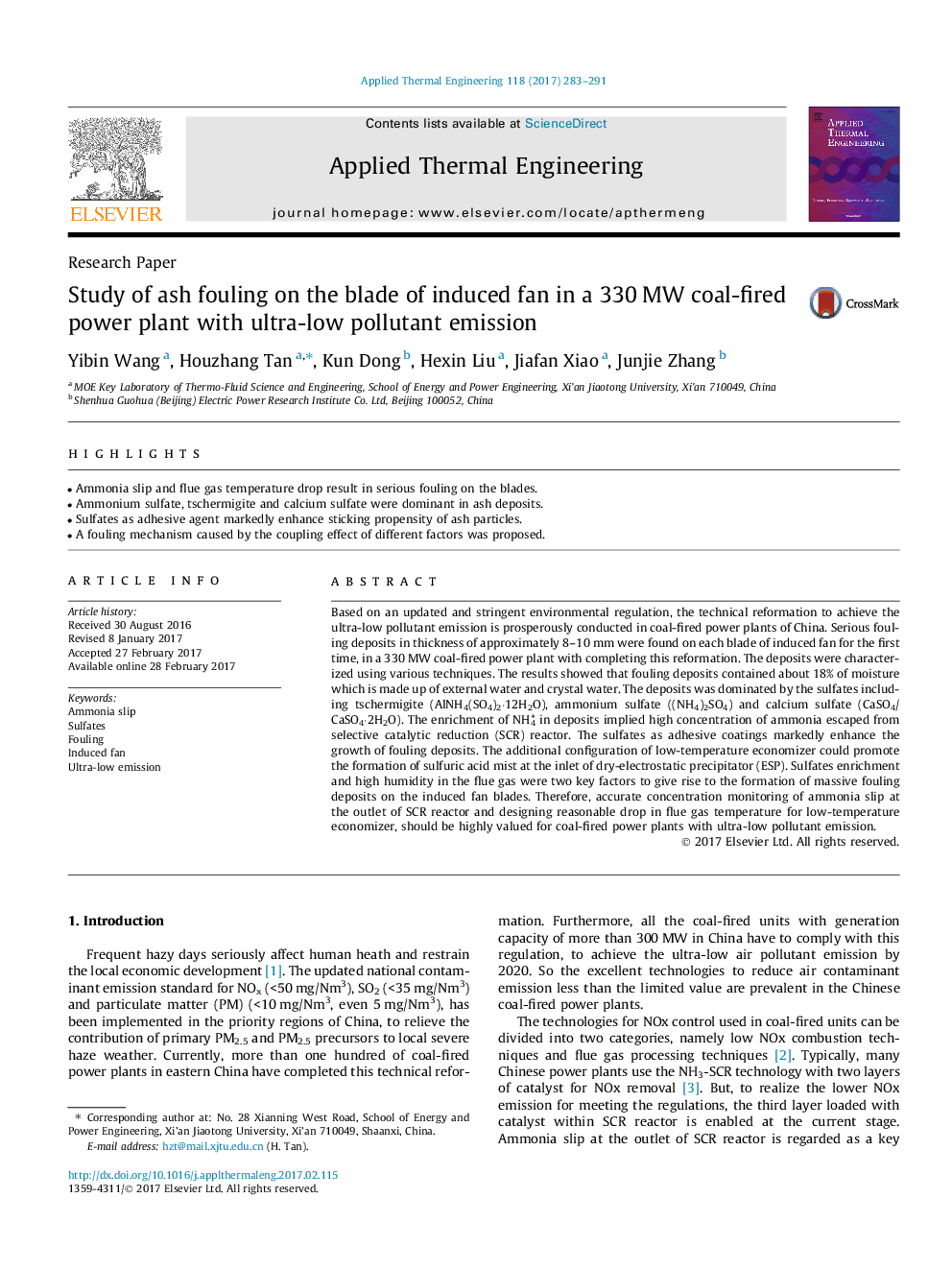| Article ID | Journal | Published Year | Pages | File Type |
|---|---|---|---|---|
| 4991359 | Applied Thermal Engineering | 2017 | 9 Pages |
Abstract
Based on an updated and stringent environmental regulation, the technical reformation to achieve the ultra-low pollutant emission is prosperously conducted in coal-fired power plants of China. Serious fouling deposits in thickness of approximately 8-10 mm were found on each blade of induced fan for the first time, in a 330 MW coal-fired power plant with completing this reformation. The deposits were characterized using various techniques. The results showed that fouling deposits contained about 18% of moisture which is made up of external water and crystal water. The deposits was dominated by the sulfates including tschermigite (AlNH4(SO4)2·12H2O), ammonium sulfate ((NH4)2SO4) and calcium sulfate (CaSO4/CaSO4·2H2O). The enrichment of NH4+ in deposits implied high concentration of ammonia escaped from selective catalytic reduction (SCR) reactor. The sulfates as adhesive coatings markedly enhance the growth of fouling deposits. The additional configuration of low-temperature economizer could promote the formation of sulfuric acid mist at the inlet of dry-electrostatic precipitator (ESP). Sulfates enrichment and high humidity in the flue gas were two key factors to give rise to the formation of massive fouling deposits on the induced fan blades. Therefore, accurate concentration monitoring of ammonia slip at the outlet of SCR reactor and designing reasonable drop in flue gas temperature for low-temperature economizer, should be highly valued for coal-fired power plants with ultra-low pollutant emission.
Related Topics
Physical Sciences and Engineering
Chemical Engineering
Fluid Flow and Transfer Processes
Authors
Yibin Wang, Houzhang Tan, Kun Dong, Hexin Liu, Jiafan Xiao, Junjie Zhang,
